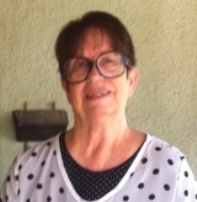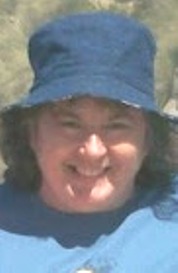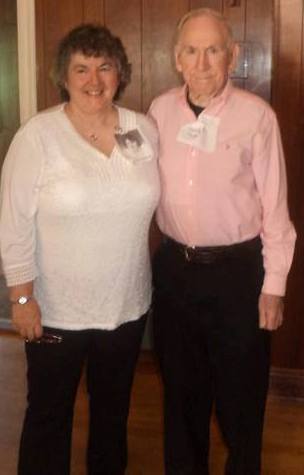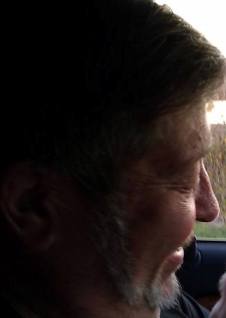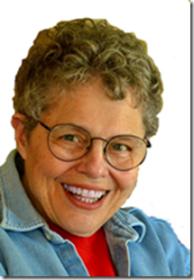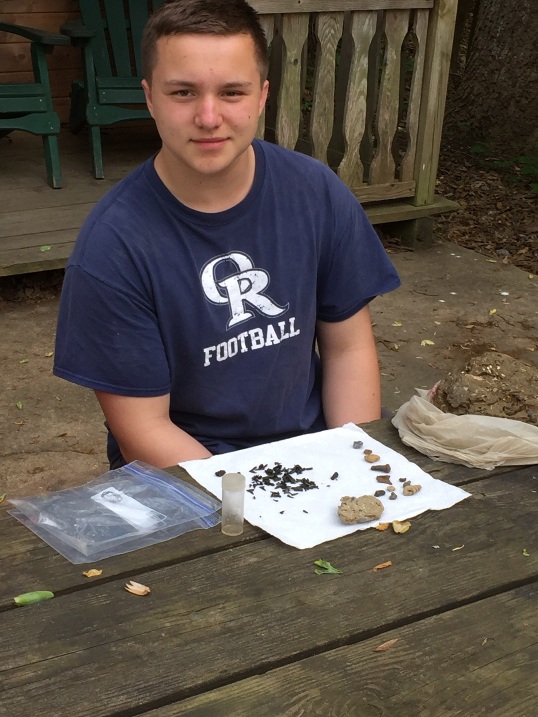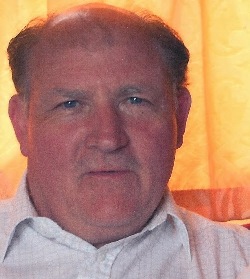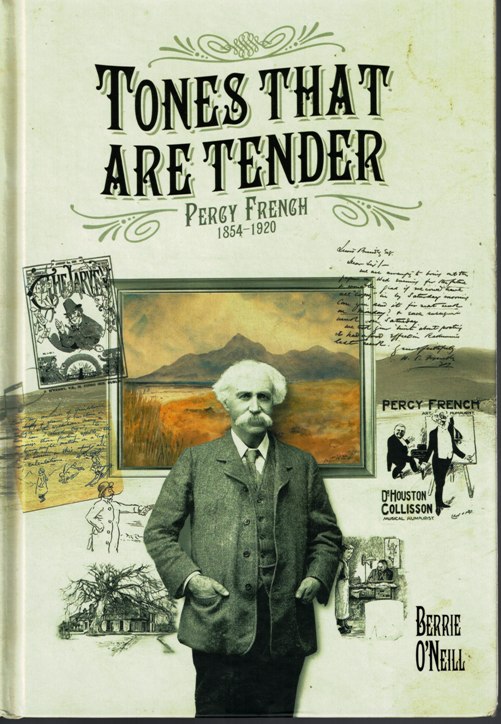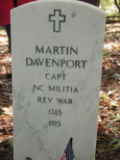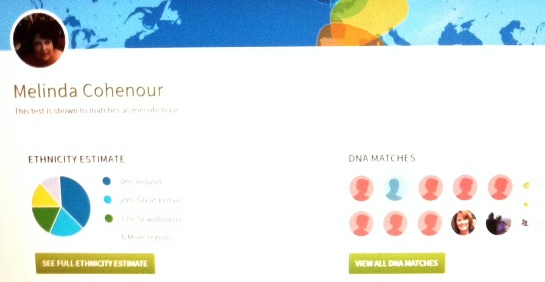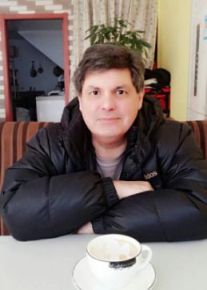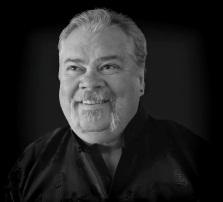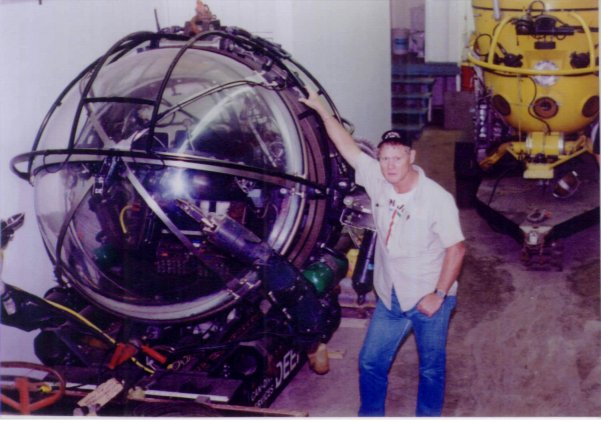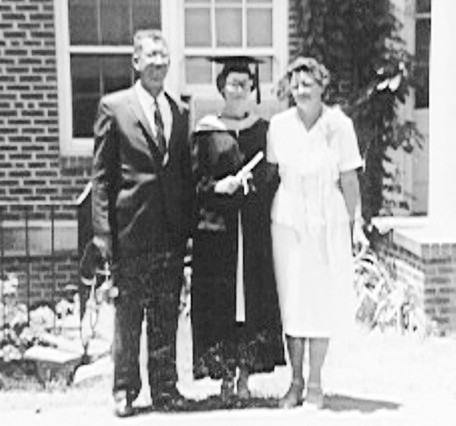Note: Chosen reprint from Hobbie$, Etc. June 1995....
(James Smith, owner of a deep-water exploration and salvage company -- Oceaneering, International --
attempted to explain to this land-locked American desert dweller who
edits Hobbie$, Etc. some of the more interesting aspects of his
vocation. During the long distance interview he patiently gave
informative comments to some of the rather naive questions this editor
asked. Jim, as he prefers to be addressed, is an expert in more than one
field, with weaponry high on the list. He modestly refers to himself as
only being among the top ten in deep water knowledge, technology and
equipment development and usage.
Jim: What is it that your readers would most want to know about my operations?
Mary: We publish this little paper in the middle of West Texas, so
we are not at all familiar with deep water procedures. Perhaps you could
tell about your company and what type of jobs you accept.
J: You know those big American Flags that you sometimes see
flying, say at car-dealers for instance? Well, originally, the Pentagon
gave those flags out for extra thank you's to someone who had performed
exemplary service to the country in their own area of operations. They
were flags that had flown over the State Department -- well, Oceaneering
was presented their first one for work with Duke University doing the
Navy diving tables. Now, everyone uses such flags at car dealerships,
and so on.
M: Oceaneering is your company?
J: It's the one I put together, organized -- it's the largest one in
the world, tied into other companies -- we bought the company
"Can-Dive" when we did the Andrea Doria. We did "The Abyss" too, this
was using the 'CalSub,' that submarine (Deep Rover) you see in the film.
And we do all the military stuff you hear about, and all the deep
wrecks. Well, I say the largest, meaning there's only one that competes
with us and that is Withhold, a Government owned organization. When it
comes time to do something really big, a really expensive experiment
like 13,000 or 18,000 feet, you know, to recover some gold or something
like that, it'll be Oceaneering that does it.
M: Because?
J: Because when you start dealing with something like that, it's almost out of the realm of people's comprehension.
M: An example?
J: The other day I was making a dive in the Newtry system -- a million and a half dollar suit.
M: I was going to ask you about your suit. I've read about the JIM suit.
J: This new suit's a million and a half bucks and just the joints,
the spare joints you carry with you, that's $30,000 for a spare
joint--they must be hand-made by little old men who work for Santa Claus
or one of those deals. (Laughing)
M: (Laughing) Wow!
J: Yeah, the guys that make them, seriously, there are no other guys but them that make them.
M: And during this dive the other day?
J: What happened was, I was making this dive 470ft. Doing this job,
right? And off in the distance, setting there watching me was an object
the size of one of those Ryder Rental Vans, called a Sonar Sub -- a
remote vehicle that has nobody in it. It has the capability of picking
me up; or cutting steel cables. It has arms on it and TV. It hovers --
doesn't move -- because it's tied into the global system, so wherever
you tell it to sit on the bottom, say, two feet off the bottom, and even
though there's a current running or anything, it will not move up, it
will not move left or right, and it will not move down. If you go over
there and push on it, it will just sit. This sub weighs about 10,000
pounds. It can pick up -- you're not going to believe this -- five
hundred pounds with its massive size. It was sitting over there watching
me with the lights on and its TV going so it could keep an eye on what I
was doing. Do you get it?
M: Is this part of your equipment, your company?
J: No. It was a corresponding operation. Along with this work we
were doing, this sub was launched off a 225ft. Ship that doesn't have
any anchors. But it was also sitting there above -- not moving. It was
doing a "bird-dog" job. It just came in to help out because it was in
the field and we only had one suit ready to go down.
M: So they were there to help?
J: They were working for the same oil field company. In deep
operations, you need rescue capabilities which usually means at least
two suits ready so if you get in trouble another diver can come get you.
Since we only had this one suit ready at the time and the oil company
was really anxious to get this problem solved, they let their equipment
they already had in the field, come in to watch and be ready for backup.
Just doing that favor of "guard-dog" since otherwise we weren't due to
dive with only one suit ready.
M: I see. But I didn't know there were subs with that capability.
J: Most people don't know this -- about the global system and sonar subs.
M: But the sub could have rescued you?
J: If anything had gone wrong, he could have come over there, cut
the cables, grabbed the suit and just brought me up. You see, the suit
doesn't have anything in the way of air coming down to it.
M: Self-contained?
J: It has a double-system with forty-eight hours of self-contained life support.
M: This gives you more mobility, doesn't it?
J: Well, it has two motors on the back -- it's a motor-pack worn on the back with two motors, costing $150,000.
M: Wow!
J: There's two pedals in the feet of the suit that you rest on
lightly-- when you put this suit on, you add joints to make it fit just
right so you are set slightly above the pedals. So, when you press on
these pedals you kick the motors in and they will spin you around or in
any plane you can think of -- up and down, left and right, or in and
out.
M: Do they have a little propeller?
J: Not too little, they're 2 ½ horsepower, so they're pretty
powerful. They're pretty mighty -- they're more than a diver could swim
if he was swimming.
M: I see.
J: And they never stop, they're spinning all the time, but the
thing that you do with the little pedals, is put the pitch into them.
They are spinning all the time from when we say "thrusters on" and we
don't turn them on and off. They just spin then we just tap our toe and
forward we go, and that's very important. You see, this suit is good for
1,000ft. And forty-eight hours that deep. So, you can see why a million
and a half dollars for one suit, remembering that you have to have two
for rescue capabilities. That's what was unusual, using the sub for
backup. When I first saw this thing at about two hundred feet away, it
come breezing up out of the darkness, the size of those big moving vans,
before I knew it was there. It was a big dark ominous shape, and,
before it turned the lights on, it looked like some big underwater
creature. It parked about 5ft. away and turned the lights on, then just
stayed there watching. I just thought I'd tell you that we have things
down there to watch out for divers or problems, since most people don't
know about them. This was only down to 470ft. I'll tell you where it
was. It was on the Intercontinental shelf. Right where I was working was
the point where the land ends and you roll over the cliff, and it goes
down to about 5,000ft. deep.
M: And a fathom?
J: Well, a fathom is six feet, so this'd be like a mile deep on the other side of the cliff.
M: I see.
J: So, you don't want to go rolling. The suit would, if you severed
the cable, since we worked on the edge, it would roll over there. And
you would have to pull a lever and drop your motors, if you started
going down that cliff with the cable severed. You couldn't help yourself
at that point. The sub'd have to take over and pick you up to the top.
M: Would you have to worry about getting the bends when you were rescued and picked up straight to the top?
J: It's an atmosphere suit. You won't get the bends with it 'cause
it works on the regular atmosphere that's in the room. It has oxygen in
it, but it adds only to make up the atmosphere that's on the outside
when you start, then maintains it.
M: I guess that was a very ignorant question. But this is so interesting and I had heard about divers getting the bends.
J: That's why we have this suit. The mission of the suit works out
like this. You don't put a diver down to 470ft. unless we put them down
to stay eleven hours. Because we can't get the money out of the dive for
less time -- there's a lot of work to put a man down to depths, there's
a lot of support work going on. So when we get the guy ready, we don't
want him back up until he gets about eleven hours of work done, uses up
the scrubber pack, uses some materials up, and that oil field wants the
service and work out of the dive.
M: You said you were doing this particular dive. Do you have several that are capable of diving?
J: Yes we have a crew of actually seven. We have a tank where we
train everybody. Before deep water diving, you have to have about 20
hours running the thing in the tank.
M: What about saturation diving?
J: I've done that too, the company has, but it's a whole different
ball game in saturation, and it's done for a different reason. Habitat,
for instance. British Ocean Corporation is the big name in that
business. BOC does the underwater welders employment for off-shore
drilling rigs.
M: Were those hard suits?
J: No, those were actually wet suits and masks. In other words, we
drop down to 585 in a wet suit and a mask with a deep diving system.
But, this suit here, you don't get cold, you can come right up, you can
put another guy down, you don't have bends, you don't have
decompression, you know, you can stay longer. With saturation, first,
you saturate, then you stay down twenty-four hours a day, using an
underwater chamber to live in, for a whole week. You work each shift,
you know, twelve hours, but not all out in the water. You can't last in a
wetsuit out in the water for eleven or twelve hours because you get too
cold. You get cold on land, and you shiver, and your teeth rattle a
little bit, but in saturation diving, after about eight hours, you start
to get cold and you shake. Your teeth start to rattle and you knock
chips off your own teeth, and can't stop shivering. Once that starts
happening, you can't do anything except get them to pull you up.
M: You can't help yourself then?
J: No, you're not worth a dime. About all you can do is drop your
tools and come back and get them another time and let someone else help
get you topside. When you get there, all night you wrap up in blankets
just to try and get warm then it takes about nine or ten hours to get to
where you're just not shaking, and then it's time to go again. It's the
kind of job that gets real nasty in the winter or deep water -- deep
water's cold.
M: How many different places around the world have you made dives?
J: Every sea you can get in. The Red Sea, the Persian Gulf, and any
of them. Craig Island, the one you saw on TV -- I was up there. The
different oceans that were open to the public, all around the world
where we had any military -- Viet Nam, anywhere we had world field
exploration, photography, salvage. Plus rivers-- a lot of rivers.
M: What is different about river diving? Do you have a current problem you don't get in the seas?
J: What's different with rivers is it's a whole other thing. Many
people who dive in the Gulf, can not dive in the rivers. Of course, many
who dive in rivers, can not dive the Gulf. The problem is what you can
see in the Gulf scares a lot of river divers. What you can't see in
rivers is scary for Gulf divers. The blackness is a great big threat to
them, and they won't dive the rivers. The current runs and trees flow
down the bottom -- trees, telephone poles, stumps, and stuff comes down
the river and you gotta know what to do when one of these jobs comes
along. There's something has to be done quick.
M: How do you know? In the blackness?
J: There's all kinds of witchcraft -- diver's craft -- you've got to
know. Most people don't know it, but there's something called the
seven-tenths rule in the river -- seven-tenths from the bottom, in the
regular straight part of the river, the river runs the most, while on
the bottom it runs the least. So even if at the seven-tenths depth, it
running at 2 knots, it might be running only a quarter-knot once you get
on the bottom. So we can do the work at the bottom. If it gets really
bad, and they still need you to dive, they bring in a crane, and drive a
big fifty-eight ft. I-beam of steel into the bottom and we go down
behind it. That's the way you can dive the big jobs. Or, they can put a
pipe down and you go down the middle and jump out at the bottom.
M: Are the rivers that deep?
J: Yes, and they can be real dynamic jobs. Any time decompression
enters into it you have to have a chamber on the job. That's where scuba
divers get into big trouble. It's foolish to dive where you don't have a
decompression chamber, because the timing is so critical. You shouldn't
go into decompression unless you have a chamber because if something
goes wrong, and you don't have a chamber, and you get the bends, you can
not treat the bends without a chamber.
M: A lot of people don't even understand what the bends means. Like me.
J: It's bubbles of inert gas -- nitrogen -- you've got 79% nitrogen
in the air and 20.94% oxygen and we use the oxygen, then the nitrogen
just travels. What happens is the nitrogen can cause mechanical
obstruction in the brain like a little BB, like a tiny little BB, then
when you start to come up, the bubble expands and produces a mechanical
pressure on some nerve, or vein, or in the brain, and cause loss of
speech or hearing, or can cause paralysis below the waist if you get a
spinal hit. It can cause an embolism that can go to your heart -- well,
it can stop your heart. Well, the way you treat is very simply, as you
come up the bubble expands, so you put the guy in the chamber and you
run him down to the treatment depth, which is like 175ft., and then the
bubble reduces in size, to one-fifth of its original size and then you
try to let it go back out by coming up slow, the same way it got into
the blood, by absorption. But sometimes it jumps out of the capillary
and gets into a particular place out of the bloodstream, and then when
it expands as you come back up, you can't get rid of the bubble, then
you've got permanent damage. So, the longer you fool around with one of
these things -- if you do not treat right away -- I mean I'm talking two
to four or five minutes is a long time in a bends situation. And twenty
minutes -- forget it. You've got trouble now, you've really got
trouble. If you lose everything below the waist on a 180ft.dive, that
you spent forty minutes on the bottom, you won't get it back if you wait
twenty minutes. You'll be paralyzed for life. A friend of mine is, and I
know that that's what he was doing. A lot of guys refuse to use the
tables -- they refuse to respect the tables.
M: The thrill of the dives and your knowledge of all this makes me wonder how you got interested in diving in the first place.
J: I joined the Navy with parental permission when I was sixteen and
a half, and went directly to First Class Deep Sea Diving School, and
then I graduated when I was seventeen as a First-Class Deep Sea Diver.
M: I've heard about the SEAL's of the Navy. What about that program?
J: What happened when we developed the SEAL team, I was in
underwater demolition called UDT at Little Creek. O.K., we used to go in
there and volunteer to go to jungle warfare school and volunteer to go
to airborne school. You didn't have to, but I wanted to become airborne
qualified or EOB bomb disposal qualified. Then whenever something came
up they would put a group of guys together that had this specialty
rating for whatever they needed. Well, what they found was, that it was a
real pain to have to get this group together fresh every time, so they
started to make everybody go to jungle warfare school and everybody go
to airborne school and then they called that Sea-Land-and-Air, you know.
That's how it evolved. Matter of fact, I was there when we built our
own parachute loft. We had different stuff you never saw. Now we,
(American forces) have jet boats and we have electronic breathing gear
-- all a lot better than when I was there. We have laser equipment
that's sort of nasty. We have sniper rifles, fifty caliber, that will
shoot one and one-quarter mile accurately on an eleven inch white
target.
M: Underwater?
J: No, we have pistols that will shoot underwater. We have a two and
a half inch snub-nosed, jet, rocket launcher that shoots a fifty
caliber rocket bullet underwater.
M: Is that like a torpedo type bullet, with fins?
J: It uses solid propellant that was made by a German scientist
coming out of WWII, a guy by the name of Bob Rhinehart. The hammer of
your pistol hits the front of the rocket and the firing pin which is
sticking out all the time, to trigger the rocket through this little
hole. It spins at 250 rpm and it doesn't have any rifling. It'll fire
the same underwater as it does topside, so you can shoot accurately with
it.
M: Wow!
J: It's nasty.
M: With your company, do you stay in pretty close contact with the government?
J: Well, yes, I'll tell you something no one else knows about yet.
Recently, we went up to Canada to take delivery of the two new
Newtsuits, No.24 and No.25. You'll never guess who was up there,
"Popeye" of the Navy SEAL's. He was there to evaluate because they are
buying the Newtsuit for the SEAL's so they can use it on the Nuclear
Sub. It will let them go outside of the sub while they're down if they
maybe need to work on the sub. We put "Popeye" down in the suit. All of
the Navy SEAL's have this unique ability that the average person doesn't
have. With an average diver, it might take him three days to tell him
how the suit works, but with one of the SEAL's, you can put him in the
suit and then while you have the head open, you reach down inside the
suit and say, "Up above you on the right side is a knob and when you
push this knob, you're going to get oxygen. You screw it out to set your
pressure. You see that gauge in front of you -- we want that at 29%,
never more than that. When you hear an alarm go off, it's going to be at
18%." Now, he will hear all that that you're saying and then you put
the faceplate on and he will dive that suit perfect. He will retain all
that technical data as he needs it. You don't get this far in the
SEAL's if you don't have a lot of snap, you just wash out.
M: They're well-chosen people then?
J: Well, normally 110 people go through training and the average
number to finish is eleven. The largest class, ever, to finish was
twenty-two. When you start going through the UDT training, the team is
right there, watching you, all the time, and they have a vote on who is
going to get in. You don't mess up and get by.
M: You don't even get the chance, huh?
J: Oh, you get the chance. You don't have to be a super-human to get
picked as long as you try, and don't give up, ever. They don't want
supermen necessarily -- I mean a weight lifter is not what they're
looking for. It is better to be smaller, but strong, wiry type of
individual with tenacity -- a don't quit no matter what. They can turn
you into, like, a steel spring, you know.
M: When you were mentioning different locations, I wondered about
diving into the so-called bottomless pools, or lakes, like in caves,
like in Carlsbad Cavern, New Mexico. Have some of these been explored?
J: Yeah, they have. Actually, they're using super special gear right
now to explore some down in Bay Rhea area. As to being bottomless,
they're really not. If you listened on sonar to the one that's called
bottomless in Bay Rhea, you'd find out it's 411 ft. deep. That's too
deep for the regular scuba diver, and they look bottomless. Here's an
example of why they look bottomless. I was in the bottom of Lake
Michigan, walking across in hard hat gear, the depth I was at on air was
247ft., and it was clear -- I could see about 100ft. All of a sudden, I
came to a big hole, a big black hole -- which I fell in. But of course,
my hose pulled tight, (I was on air, you know) and I went down about
ten feet. There was cold water coming out of it. But you talk about an
ominous looking thing. Here I am, over this thing about fifty feet
across, and they pulled me across it. And then when I got to the other
side, I was at 247ft. again right there in the straits of Mackinaw. But
here was this hole fifty feet across, that while they pulled me, there
was nothing I could see below me, it was just black, I mean I felt like I
was crossing a bottomless hole, you know what I mean?
M: Yes.
J: I mean, that was a bad feeling. Because with the hard hat, you've
got eighty-five pounds of weight on, and shoes that weigh fifty-two
pounds -- if anything happened to your air, you couldn't blow yourself
up, and if the cable broke, you'd certainly find out if it was
bottomless.
M: And, anything could be down in those.
J: Well, anything could be, but it's usually not -- hopefully.
Sometimes, there is stuff in there, you know, all kinds of weird stuff
in there. You know the ocean is veritably unexplored as far as I am
concerned.
M: I was thinking of like the Loch Ness monster in Scotland. Have you been able to dive in the Lochs?
J: Oh, it's probably there, but I didn't go in the Lochs, I was
scuba'ing over there and I did go in the North Sea. I was there for
another reason, working commercial, and I just didn't have reason to go
into the Lochs. They're nasty-cold, you know what I mean? But there's
too much evidence to my way of thinking for there not to be something
there. If you've ever been in the ocean, and you go down real deep and
you see the canyons, and mountains down there, and you don't go
anywhere, you just don't see them -- I don't know how anybody could say
that the ocean has been all explored. You could hide a whole school bus
in some of those canyons, you know.
M: Right. Our granddaughter is living about four miles off of Lake
Erie, and she tells us that most of the ghost stories in that area are
about ship wrecks.
J: I've done a lot of diving in the Lakes. I did a wreck 105ft., in
Lake Huron that was really interesting. I dove on a sailing ship sunk in
a storm, that was sitting upright on the bottom. That was very
fascinating because the lanterns had turned over sideways when she went
down and they had burned up, making a black smoke spot on the side. I
used to use lanterns, so I knew how they got that smudge-- that the ship
turned over as she sank. It was a 105ft. Schooner and had a single
cylinder steam engine that caused it to settle with the bottom down.
That was about six mile from Mackinaw City. It's still there in the
105ft. depth.
M: I've been told ESP plays a big part in diving.
J: I wasn't going to mention it, but since you brought it up, on
that particular wreck, I think it played a big part. There's something
they use on a boat called a trace trail log. That means it's a rope they
throw over the side and then it curls out behind, and it spins like a
propeller, but it's a lo-ong, sleek-looking propeller. They're all made
by hand and they look like a pencil with little fins, and they're real
pretty. So, I had this thought, "I'm going to jump on this boat," and
this boat's been dived on by a lot of people, okay? This was the first
time I ever dove on it. "Now," I said, "I'm going down and get the
tracetrail log spinner." And I went straight down, dug in the ashes,
right at the top rail, and picked up that tracetrail log. I went
directly to it. Now the odds of me going directly to that thing and
picking it up, when other people have dove the wreck -- when whole scuba
clubs have dove it -- you can figure the odds on me getting that at 100
to 1. But that's the kind of things that happen to me. I've done a lot
of things like that. That, and colors.
M: Now, I know a little about ESP, enough to believe it's a factual
skill, not luck and not a fake. So, what are you saying about colors?
J: I was diving a helicopter wreck. And I have little secret things I
use, like I take an automobile antennae down, then I lay down on the
bottom and I push the antennae out in front of me, open it up, then I
slide it left to right, and if it touches any metal, it's gonna go
"Click!" It's gonna be real loud if it touches anything, and I touched a
piece of metal. You remember I said I was looking for a helicopter,
well, the minute I touched it, I thought, "That's one of those things
that stick up in the floor that they tie things down with." This is a
wreck, now think of this. Then I reached up without being able to see
this out in front of me , it's down in the mud, and shoved it through
the little hole and I picked it up and let it slide down to my hand. Now
how can you figure that one out?
M: It must be ESP, I told you I believe in it, and you were exhibiting that skill.
J: I knew when I touched it, what it was. Sometimes I can touch
colors on a dive when you can't see, not even a little bit, and you
don't think about it. It just happens. Like you touch a red object, and
you'll know what it is, like, "It's a red baby rattle!" Now, get this,
you're on the site of a commercial wreck, searching a boat out in the
Gulf of Mexico, and you just bump something with your elbow, and think,
"red baby rattle" and when you reach around and pick it up, that's what
it is. The last thing you would think of on a commercial wreck out in
the middle of the Gulf, and, that's what it is.
M: Really not the right place to expect it!
J: That's why I know it's some kinda thing -- I don't know what it
is. It only happens when you aren't trying to make it happen, you can't
just make it happen.
M: You can't plan for it?
J: No, and you don't want to depend on it to make a living either.
(Both laugh)
M: I guess the most terrifying thought to me is the diving in total darkness.
J: Tell me how to get light on this job. I was in the bottom of
Charles River, and the bottom is fifty-two feet deep, then I drilled a
hole with the jet nozzle and I had to go down in the bottom straight for
forty-seven feet in a hole big enough for my shoulders only, and if you
think there's any light down there, you think about it. First of all,
the river's dark, the bottom's fifty-two feet, then you go down another
forty-seven feet in a hole that you make in the bottom stirring mud up.
You see how dark it could be?
M: I can imagine that, but I don't see the purpose of digging any deeper in the bottom of the river.
J: Oh, I had to go down parallel to a thing that we had shoved down
into the bottom and jet it loose so it would come up. This was so we
could move it about a foot.
M: A foot! All that, well, I guess I understand.
J: We had a reason.
M: Well, I was thinking when you started telling about it, it
might be for a wreck, but I don't guess they get covered up that deep.
J: For salvage? You want to know how deep we have to go for salvage,
down in the mud -- you want to know how bad they're covered? You take a
big tug boat at 150ft. long, like the one we were searching for in the
bottom of the Mississippi -- the tip of the boat's antennae was sticking
out. So we had to jet it out. This'll give you an idea of what a real
jet job is like. We jet while we suck it out with a thirty-inch pipe on a
big pump and we suck the mud out from all around it, and get the boat
out-lined, then we go inside and suck the mud out from the inside. That
gives you an idea when you talk about moving mud, we really do move the
mud. I was crossing the Mississippi River following a telephone cable
and you know what the depth of my ditch was? Thirty-seven feet deep,
down under the mud, right, and then the whole thing fell in on me.
M: Oh, no! But, did you have one of those jet nozzles? What could you do?
J: So, what happens then is, you don't panic or nothing, you just
turn the jet nozzle around and start following your hose and jet
yourself out again. You can do that because the cavity you're in is full
of water because of the jet nozzle running. You keep moving in your own
little cave. If you are pressed to the bottom too much to move when
something caves in on you, you have to jet your legs loose first.
'Cause, if you go down in the sand, and you get one foot buried in the
sand up to the bottom of your ankle -- that's not very far, right -- and
you don't have a jet nozzle, you can Not just pull that foot free.
M: I know I've lost tennis shoes in the Reservoir while wading, but
at least I got my foot out. (Laughing) I know that this is taking up a
lot of your valuable time and we really do appreciate your information.
What else can you share with us?
J: Well, it's just a job to us. Forty years of doing salvage and
the rest of it, not to brag, that's just work to us. There's no
exaggeration, believe me it's just a routine, everyday, it's not like
something you care about. I don't even like swimming pools, because
water is not a big thing -- relaxation or recreation thing. I spend too
much time in water on the job. You get all the water you want when
you're in the business. You lose all your water sports fun after the
first twenty years.
M: You went right to the business after the Navy?
J: That's right, I got out the day before I was twenty-one. If I had
it to do over, I don't think I'd probably go the same duties -- I was a
torpedo man, then the diving and in the non-navy world, I don't find
many torpedoes to work on, and you don't do too much of that now.
M: You think you would have chosen a field that would have more career possibilities on the outside?
J: Now, I would be smart enough to choose computer technician
instead. Or an electrician or something smarter. In fact, I am that now,
I'm a regular electrical engineer. And I did 1400 hours in Air
conditioning from the University of Texas, El Paso. I'm trying to tell
you I would have done my life differently. The diving part wouldn't
catch me now like it did then.
M: Don't you think with your ESP and your aptitude for underwater
skills, it was inevitable, that you would have come to it sooner or
later?
J: I don't know. I'm also an underwater demolitions expert -- I blew
the most steel up in the world working in the Gulf, and cut down
railroad bridges with explosives -- that's not easy with the steel that
is in a railroad bridge. I liked doing underwater photography -- I did
Jerry Cramer for NFL films and I did the battle cruiser for television
with Bob Allison. I did the diving work for the film "Abyss," so I don't
know. I'll send pictures of that sub, and of "Popeye" for your next
issue.
Editor's Note: The pictures of the suit and of "Popeye" were
carried in the original publication of this interview, then the
originals were returned to Mr. Smith. The picture of the Cal-Sub used
in the Abyss was given to the editor however, and is shown below with
one of the "stage-deckhands" alongside it.
Click on author's byline for bio and list of other works published by Pencil Stubs Online.





